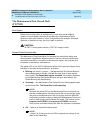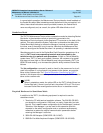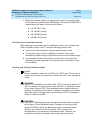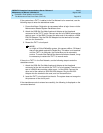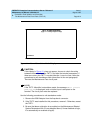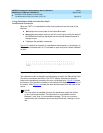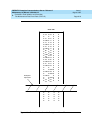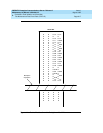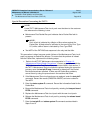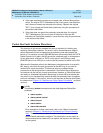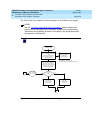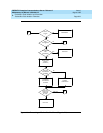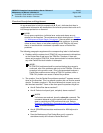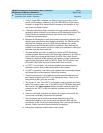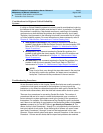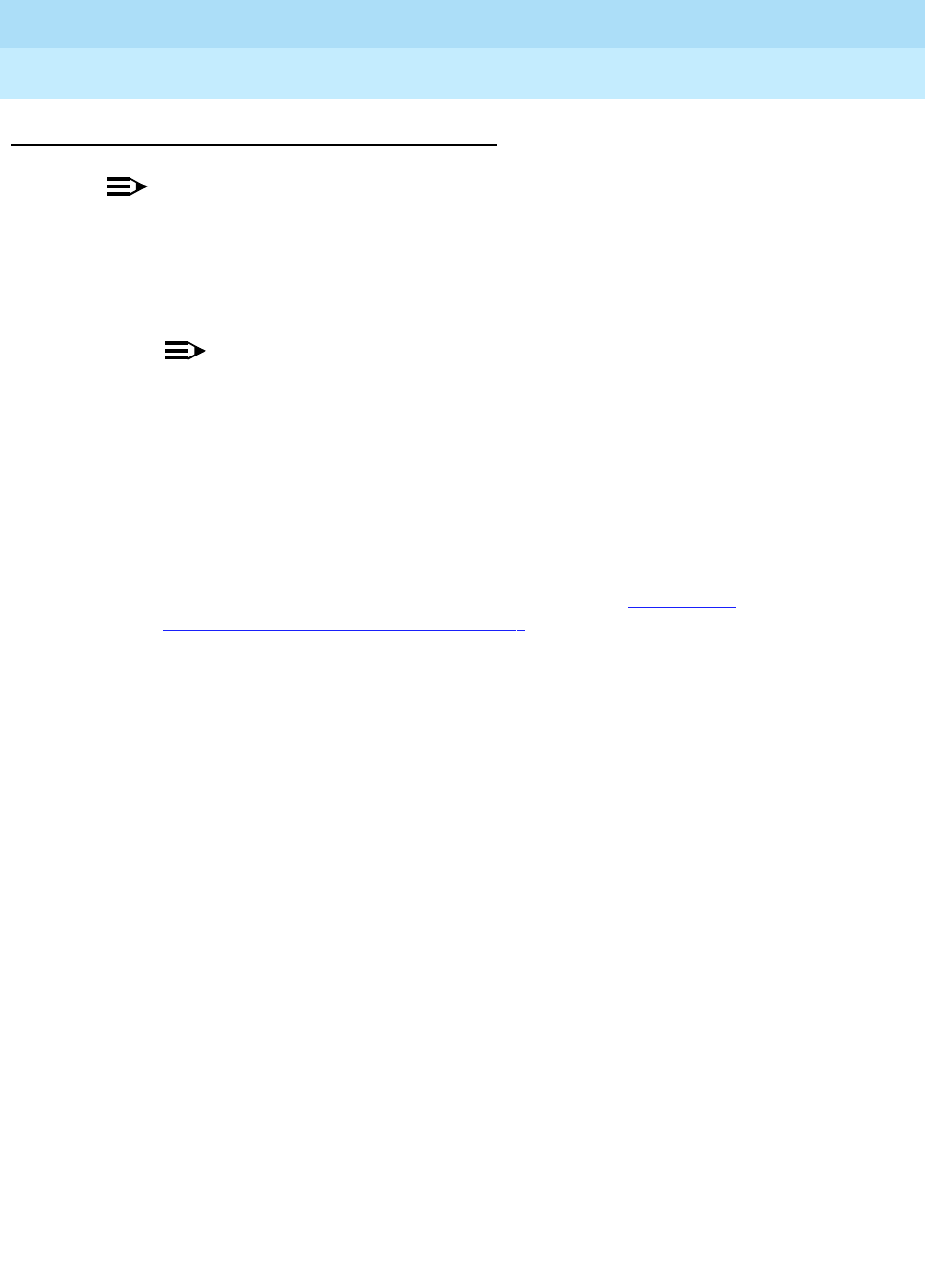
DEFINITY Enterprise Communications Server Release 6
Maintenance for R6vs/si
555-230-127
Issue 1
August 1997
Packet Bus Fault Isolation and Correction
Page 9-18The Maintenance/Test Circuit Pack (TN771D)
9
Special Precaution Concerning the TN771
NOTE:
A new TN771 Maintenance/Test circuit pack must be taken to the customer
site whenever the following is true:
■ Maintenance/Test Packet Bus port indicates that a Packet Bus fault is
present.
NOTE:
Such a fault is indicated by a Major or Minor alarm against the
Packet Bus. A Major alarm is indicated in the error log by Error Type
513, while a Minor alarm is indicated by Error Type 2049.
■ Test #572 of the PKT-BUS test sequence is the only test that fails.
This precaution is taken because certain failures of the Maintenance/Test circuit
pack can appear as Packet Bus failures. To ensure that the problem is indeed
with the Packet Bus, implement the following steps:
1. Refer to the M/T-PKT Maintenance documentation in Chapter 10,
‘‘Maintenance Object Repair Procedures’’. Correct any problems with the
TN771 Maintenance/Test Packet Bus port as described in that section. If
the TN771 Maintenance/Test circuit pack is replaced during the correction
process, enter the test pkt P long command to determine if the Packet
Bus faults have been resolved. If there are still Packet Bus problems,
correct them by using the procedures in the sections that follow.
2. If the Maintenance/Test circuit pack was not replaced, enter the test pkt P
command. Record the results (PASS/FAIL/ABORT) and error codes for
Test #572.
3. Enter the status system P command. Record the information listed for the
Packet Bus.
4. Busyout the Maintenance/Test circuit pack by entering the busyout board
PCSS command.
5. Replace the Maintenance/Test circuit pack with the new circuit pack.
6. Release the Maintenance/Test circuit pack by entering the release board
PCSS command.
7. Enter the test pkt P and status system P commands as described in
Steps 2 and 3.



